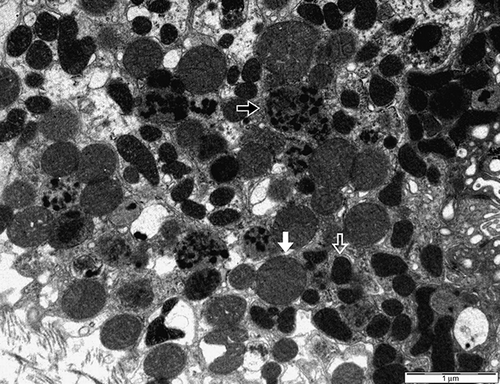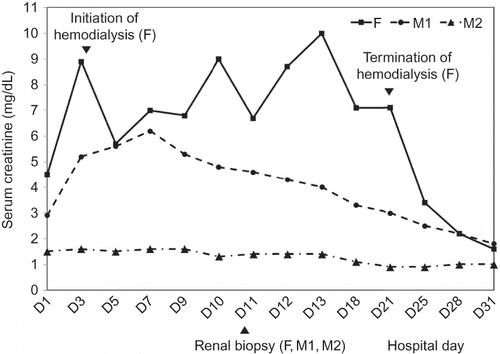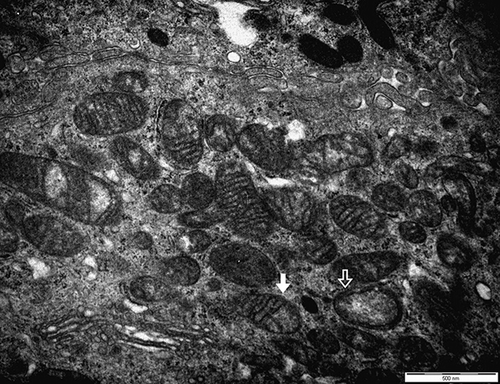Figures & data
Figure 2. Light microscopy shows that the glomerulus appears normal and tubular epithelial cells are degenerated with focal loss of nuclei. Some tubular lumens are dilated and filled with eosinophilic casts. Interstitia are slightly widened with a few mononuclear cells (H&E, ×200).

Figure 3. The section shows many lysosomes containing dense granular materials (black arrow). Equal-sized oval mitochondria are considered to be normal (white arrow). Diverse-shaped and small-sized mitochondria that have a dense matrix are considered to be degenerated (hollow arrow) (second male, electron microscopy, ×10,000).


